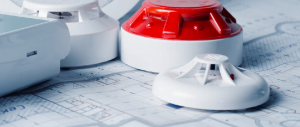
This webinar is based on the NFPA 72 National Fire Alarm and Signaling Code and will focus on the spacing requirements of automatic detection devices, such as smoke and heat detectors. Participants will also become familiar with the basics of notification device layout with focus on rooms and corridors, as well as requirements that apply to sleeping areas. Common questions such as “How high off the floor?” and “How far apart?” will be discussed.
Learning Objectives:
- Understand how to locate and use NFPA 72 spacing requirements
- Explain spacing requirements for smoke and heat detectors
- Learn notification device layout requirements for rooms and corridors
- Describe sleeping area requirements for notification devices
CEUs: 1 contact hour
Certificate of Completion:
Each participant registered, attending the full live training webinar or viewing the post-live recorded on-demand webinar will receive a Certificate of Completion (you must be registered under your name to received a certificate, one certificate per registered participant). This certificate will include the participants name, training subject, date, number of training hours completed and the Fire Smarts name, address and phone number.
Certificates will comply with International Code Council (ICC) CEU requirements for ICC approved training courses. Fire Smarts is an approved training provider of the ICC. ICC CEU’s are assigned based on 0.1 CEU per training contact hour.
Certificates can be used as supporting documentation for CPD points required for NICET certification. This applies to the “Additional Education” section of NICET Policy #30 on Continuing Professional Development that allows for CPD points for education to advance, broaden and enhance technical knowledge and job skills.
Certificates can be used as supporting documentation for credit hours required for re-certification as part of the Pennsylvania Uniform Construction Code (UCC) program. Continuing education credit is determined as one credit per training contact hour.
Certificates can be used as supporting documentation for continuing education (CE) hours for Texas Commission on Fire Protection certifications. Fire Smarts is a continuing education source under “Nationally Recognized Training Providers”. Continuing education hours are determined as one CE hour per training contact hour.
About the Presenter, Tom Parrish, SET, CFPS, PSP

Parrish serves on several NFPA technical committees including NFPA 72 Signaling Systems for the Protection of Life and Property and Emergency Communications Systems. He is also a Board Member of AFAA and a senior instructor for NFPA.
His professional credentials include Level IV NICET Certified Fire Alarm Technician, Level III NICET Inspections and Testing, Certified Fire Protection Specialist and Master Electrician. Parrish is board-certified as a Physical Security Professional by ASIS and holds a Bachelor’s Degree in Industrial Technology from Kean University.
For more information or to register, please click here.